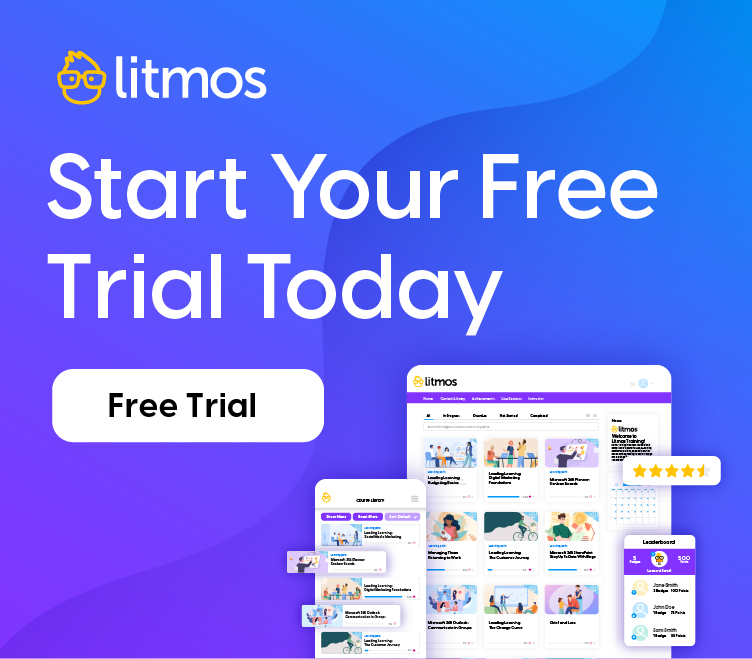The Hidden Costs of a Budget LMS (and How to Avoid Them)
Key Takeaways:
|
Only 10% of companies express high satisfaction with their current LMS, according to research from Brandon Hall Group. This staggering statistic reveals a widespread problem: many organizations are trapped with learning solutions that don’t deliver. That’s because businesses facing budgetary constraints often need to sacrifice quality for lower prices when it comes time to choose a learning management system (LMS). It’s a tale as old as the LMS itself, but the ending is rarely a happy one. The 90% of LMS users who are dissatisfied with their LMS platforms likely chose price over value – opting for an LMS that was inexpensive at the outset but caused major friction, loss of productivity, and misalignment in the long run.
Let’s explore this all-too-common phenomenon and break down the hidden costs of “cheap” learning systems. In this article, we’ll provide a framework for how budget-conscious businesses can justify investing in a truly valuable platform. We’ll show you how to look beyond the initial price tag and focus on the long-term ROI that a prospective LMS can deliver.
Weighing Upfront Costs Against Longterm Value
When budgets are tight, every dollar is scrutinized, and a new LMS can viewed by some stakeholders as a luxury. The pressure to choose the cheapest option is immense. However, this short-term thinking often ignores the compounding problems that choosing the wrong LMS creates. The real challenge isn’t just about cost; it’s about value. A cheap LMS often fails in critical areas, leading to significant hidden costs:
- Poor User Adoption: An unintuitive, clunky interface leads to frustrated employees who simply won’t use the system. If no one is completing the training, the investment, no matter how small, is wasted. Litmos is the easiest to use LMS on the market, with mobile-first features and an intuitive UI that’s loved by admins and learners alike.
- Lack of Scalability: Inexpensive LMS platforms work for small businesses, but can buckle under the pressure once growth is underway. As you add more users and courses, performance degrades, and you’re forced into a costly migration to a new system. Litmos is built to grow with your business, offering multilingual support, APIs and integrations, AI-powered training personalization, and custom branded instances that make learning seamless across your organization.
- Hidden Fees and Integration Headaches: What seems cheap upfront can quickly become expensive. Many low-cost providers charge extra for essential features and integrations with critical systems like your HRIS or CRM. Litmos offers flexible pricing options tailored to meet your requirements.
When justifying your LMS investment to key decision-makers, reframe the conversation from a cost-center expense to a strategic investment in your organization’s most valuable asset: its people. A quality LMS drives efficiency, improves performance, and directly impacts the bottom line.
How to Determine the Real ROI of a New LMS
To make a compelling business case for a new LMS, you need to speak the language of finance. Moving beyond the initial price tag to calculate the long-term value and measurable return on investment of your learning platform is essential. A powerful LMS delivers ROI in several key areas:
- Reduced Training Costs: Eliminate the significant expenses associated with in-person training, such as travel, venue rentals, and instructor fees.
- Increased Productivity: Better-skilled employees are more efficient and effective in their roles, leading to direct gains in productivity.
- Higher Employee Retention: For the average US employee, the cost of turnover is approximately $15,000 per worker. Providing clear opportunities for career development and upskilling is a proven way to increase employee satisfaction and reduce costly turnover.
- Tangible Compliance Savings: Avoid hefty fines and penalties by ensuring your workforce is always up-to-date on required compliance training.
By focusing on these metrics, you can build a powerful business case that demonstrates how an LMS is not just a tool for learning, but a driver of significant, measurable business results.
| Take a deeper dive into the metrics that matter most for measuring learning success. Gain strategies for driving meaningful conversations about learning outcomes and return on investment (ROI). Watch our latest webinar on the ROI of Learning >>. |
LMS Features that Are Actually Worth It
It’s easy to get lost in a long list of LMS features. The key is to focus on the capabilities that will deliver real value to your organization and your learners. Here are some of the features that are truly worth the investment:
- AI-Powered Personalization: Deliver unique learning paths for each employee. AI tools within the LMS can recommend relevant content based on learner roles and needs, to close skills gaps and create a more effective and engaging learning experience.
- Automated Administration: Free up your L&D team from time-consuming manual tasks. Features like automated course assignments, progress tracking, and customizable reporting dashboards allow your team to focus on strategy instead of administration.
- Robust Analytics and Reporting: Go beyond completion rates. A powerful LMS provides actionable insights into learner engagement and the impact of training on business goals, allowing you to demonstrate clear ROI to stakeholders.
- Seamless Integrations: Your LMS shouldn’t be an island. Look for a platform with pre-built connectors for your essential business systems, HRIS, and e-Commerce platforms to create a unified data ecosystem.
- External Training Capabilities: Turn your training from a cost center into a revenue driver. An LMS with integrated e-commerce and multi-tenant capabilities allows you to easily sell courses to customers, partners, and your entire ecosystem.
| Overwhelmed with the LMS buying process? Streamline your LMS vendor assessment with our free LMS Comparison Checklist. |
How Dream Vacations Used Litmos LMS to Drive Business Results
Dream Vacations uses Litmos LMS to deliver a wide range of training materials to their travel advisors. From 2023 to 2024, they saw double-digit growth in learning module consumption, with learners participating in more than 98,000 modules. Estimating a per-user cost of under $3, Dream Vacations has found Litmos to be a cost-effective, flexible and scalable customer training solution that empowers franchise owners to take charge of their training and progress at their own pace.
| Take a page from Dream Vacation’s winning playbook. Crack open the Litmos Customer Training Guide for training tips and strategies that drive adoption, retention, and revenue. |
Looking Beyond the Price Tag
Choosing an LMS is a long-term strategic decision, not a short-term cost-saving measure. While the appeal of a cheap LMS is understandable, the hidden costs of poor adoption, a lack of scalability, and missing features can far outweigh any initial savings. By focusing on the long-term ROI and investing in a powerful, flexible platform, you can empower your employees, delight your customers, and drive real business growth.
Ready to see how a truly valuable LMS can transform your organization? Book a free, no-obligation demo today!




